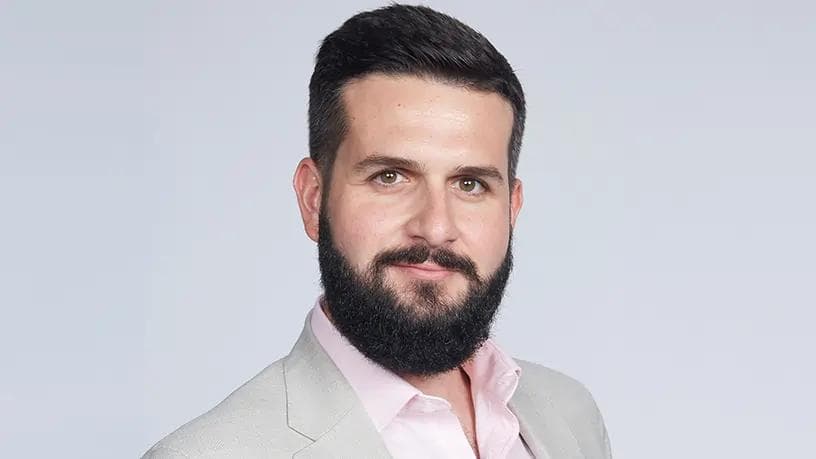Beyond Interest: How Banks Are Reimagining Revenue in the Digital Age
Beyond Interest: How Banks Are Reimagining Revenue in the Digital Age
Published by Jessica Weisman-Pitts
Posted on April 25, 2025

Published by Jessica Weisman-Pitts
Posted on April 25, 2025

Traditional banking models, long reliant on net interest income, face significant challenges as interest margins compress. According to McKinsey’s 2021 Global Payments Report, the global contribution of net interest income to payments revenue declined from 51% in 2010 to 46% in 2020. The report also notes that a 31-basis-point contraction in global interest margins reduced payments revenue by $66 billion—two-thirds of the total global net decline. In response, banks are exploring alternative revenue streams, particularly fee-based services and digital offerings, to sustain profitability in an increasingly digital economy.
The Pressure to Diversify
Traditional revenue streams are no longer sufficient to sustain long-term growth. As Deloitte highlights in its 2024 outlook, banks are under growing pressure to reduce reliance on net interest income and accelerate the development of fee-based services. This shift reflects more than a temporary adjustment—it marks a structural transformation in how value is created across the banking sector.
One of the clearest indicators of this change is the rise of embedded finance. Embedded finance refers to the integration of financial services into non-financial digital platforms, such as e-commerce or ride-sharing apps. According to Juniper Research, embedded finance revenues are projected to grow by 148%, rising from $92 billion in 2024 to $228 billion by 2028. As financial services become increasingly integrated into non-financial digital platforms, banks that adopt embedded and ecosystem-driven models stand to unlock substantial new revenue opportunities.
The Subscription Revolution in Banking
As banks explore new business models, subscription-based services emerge as a promising avenue for long-term revenue generation. According to AirPlus, these models enable banks to offer flexible product bundles tailored to individual customer needs while creating predictable and recurring revenue streams. This marks a notable departure from the traditional transaction-driven model, signaling a shift toward relationship-based banking that prioritizes long-term engagement over one-off interactions.
Key Benefits of Subscription Banking Models
1. Predictable Revenue Streams
Subscription services offer banks recurring and forecastable income—creating a more stable revenue base than interest-margin-driven models. This consistency allows institutions to plan more effectively and invest in innovation more confidently. As Bank of America outlines, predictable revenue models help financial institutions better align their strategic priorities with long-term customer value.
2. Enhanced Customer Engagement
In the subscription economy, the emphasis shifts from one-time transactions to long-term relationships. As Nordea explains, monitoring subscriber behavior enables banks to personalize offerings, increase retention, and foster deeper engagement—turning passive users into loyal customers through continuous value delivery.
3. Diverse Service Offerings
Banks are increasingly bundling traditional financial products with lifestyle and convenience-based features. For instance, Revolut offers tiered subscription plans—Standard, Premium, and Metal—that provide benefits such as higher ATM withdrawal limits, overseas medical insurance, and access to airport lounges. Similarly, Nubank offers its Ultravioleta program, which includes 1% cashback, travel insurance, and exclusive perks for a monthly fee. These tiered subscription models allow customers to tailor their experience while giving banks more pricing and service design flexibility.
4. Competitive Differentiation
As financial services become increasingly commoditized, subscription models offer banks a way to stand out. By curating tiered, value-added offerings—whether focused on ESG, wellness, or personalization—banks can position themselves as more than just service providers. This differentiation strategy is key to attracting digitally native consumers and building brand loyalty in a crowded market. For instance, a bank offering a wellness-focused subscription plan could attract health-conscious customers, while a bank emphasizing personalization could appeal to those who value tailored experiences.
Premium Digital Services: The New Frontier
The digital banking ecosystem is expanding rapidly. The global digital banking platform market is projected to grow from $11.5 billion in 2024 to $31.3 billion by 2033, representing a compound annual growth rate (CAGR) of 11.7%. This growth highlights the increasing demand for sophisticated, flexible digital banking solutions that deliver customer convenience and institutional efficiency.
In response, banks are developing premium digital offerings that enhance the customer experience and generate new, fee-based revenue streams. These premium features typically include:
AI-powered platforms now offer tailored budgeting tools, real-time spending insights, and predictive investment guidance to support more informed decision-making.
Banks incorporate multi-layered security into paid service tiers, from biometric authentication and identity theft protection to real-time fraud alerts and cyber insurance.
Subscription tiers increasingly include access to personal financial assistants, priority customer service, and exclusive digital tools that streamline complex banking interactions.
By layering these digital enhancements into tiered offerings, banks create differentiated service experiences that meet evolving customer expectations while reinforcing brand loyalty and increasing non-interest revenue.
Lifestyle Benefits and Beyond
As fee-based models become central to profitability, banks are rethinking their role as financial service providers and curators of lifestyle value. According to McKinsey, leading institutions are achieving 40% or higher fee-to-revenue ratios, signaling that non-interest income is becoming a critical lever for long-term growth.
To support this shift, banks are embedding lifestyle-focused benefits into their premium offerings. Contextual Solutions notes that lifestyle banking is becoming a core strategy to build emotional connections with customers and differentiate itself in a crowded digital market. These services create a richer customer experience while unlocking new fee-based revenue opportunities.
Examples of these lifestyle-linked offerings include:
Travel and Leisure Perks
Access to airport lounges, concierge services, and VIP event tickets—often bundled into premium account tiers.
Health and Wellness Programs
Integration with fitness apps, mental health resources, and discounts on health insurance—offering convenience and peace of mind.
Retail and Entertainment Offers
Early access to shopping events, cashback partnerships, and streaming discounts—connecting banking with daily consumer habits.
Purpose-Driven Perks
ESG-aligned rewards and donation tools, such as the ability to contribute to vetted environmental or social causes, are also gaining ground. Proven highlights that these offerings help banks engage customers who prioritize sustainability and impact.
By aligning with lifestyle preferences and personal values, banks are evolving their role in customers' lives, creating deeper engagement and more diversified, resilient revenue models.
The Rise of Banking-as-a-Service (BaaS)
Banking-as-a-Service (BaaS) enables banks to offer their core financial products—such as payments, lending, and account management—through API-driven platforms to third-party providers, including fintech, retailers, and other non-bank companies. This infrastructure-sharing model allows non-banks to embed financial services into their customer experiences while enabling banks to expand reach and generate new revenue without direct customer acquisition.
According to Softjourn, one of the primary benefits of BaaS is creating new revenue streams through API-based access to core banking functions. By monetizing their infrastructure, banks can indirectly serve an entirely new layer of customers while building scalable partnerships with fintechs and platform-based businesses.
Juniper Research projects that global BaaS platform revenue will grow by 158%, from $36.4 billion in 2024 to $94 billion in 2028, driven by demand for digital account issuance, card products, and embedded transaction services.
Key BaaS opportunities include:
Non-banking companies can offer branded financial products by leveraging a licensed bank’s infrastructure.
Banks charge third-party developers for access to specialized banking APIs—turning technology into a recurring revenue model.
Fintech partnerships based on revenue-sharing agreements allow banks to benefit from the growth of digital platforms they power behind the scenes.
Through BaaS, banks expand their relevance beyond traditional service models and position themselves as critical infrastructure providers in a digitally distributed financial ecosystem.
Looking Ahead: The Future of Fee Innovation
As the digital transformation of banking accelerates, the push toward fee-based innovation is poised to reshape the sector’s business models well beyond 2025. Several emerging trends are signaling where banks are heading next:
1. Embedded Finance Expansion
The embedded finance sector is experiencing significant growth. According to a report by MarketsandMarkets, the global embedded finance market is projected to expand from $115.8 billion in 2024 to $251.5 billion by 2029, reflecting a compound annual growth rate (CAGR) of 16.8%. This surge is driven by the increasing integration of financial services into non-financial platforms, enhancing customer experiences and creating new revenue streams for businesses
2. AI-Driven Personalization
Banks increasingly leverage generative AI to deliver hyper-personalized services, from financial advice and fraud detection to smart customer support. AI enhances operational efficiency and powers premium offerings, enabling banks to create tiered experiences based on individual behavior, preferences, and needs. This opens the door to charging for value-added insights, automation, and predictive tools once seen as differentiators—but now becoming monetizable features.
3. Sustainable Finance Offerings
Fee innovation is also extending into purpose-driven services. Green products—such as carbon footprint tracking, ESG investment tools, and sustainability-linked accounts—are being introduced as add-ons or premium features. These offerings appeal to a growing segment of values-driven customers and provide banks with an opportunity to generate non-interest income while reinforcing their sustainability agenda.
Together, these trends signal a shift in how banks define and deliver value. The future of banking will not be shaped solely by rates and returns—but by relevance, integration, and experience.
As banks move beyond interest-driven models, those that succeed will treat innovation not just as a product strategy—but as a shift in their business model. Whether through subscription tiers, embedded services, or AI-driven personalization, fee-based offerings must align with evolving customer expectations and digital behaviors. The opportunity is no longer about generating more revenue—it’s about creating more relevance. In this new era of banking, value will flow to those who can design experiences worth paying for.
Explore more articles in the Banking category











